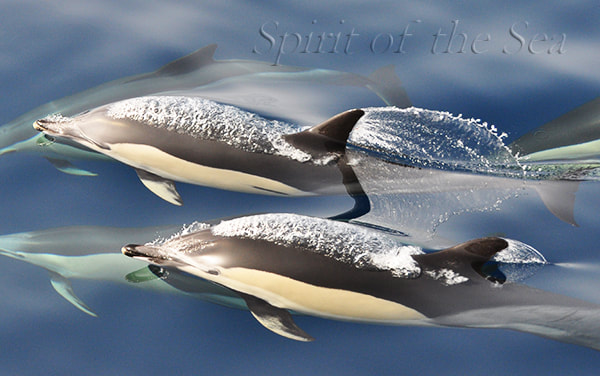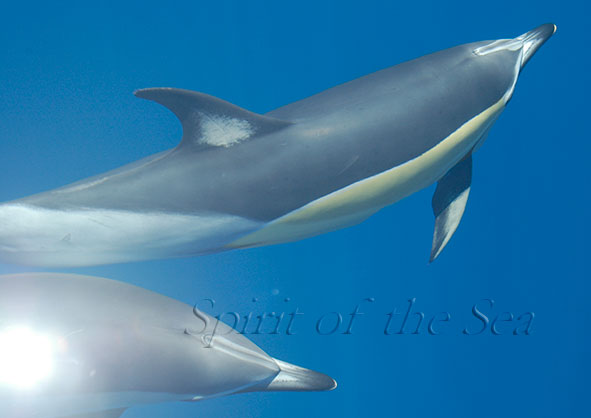Common dolphin
Sighting
Common Dolphin in Gran Canaria (Delphinus delphis)
Until the 1990s, it was believed that there was only one species of common dolphin in Gran Canaria. However, through extensive research on the species, two main species have been identified:
- Coastal or long-beaked common dolphin (Delphinus capensis)
- Oceanic or short-beaked common dolphin (Delphinus delphis)
The common dolphin is one of the most widespread and recognisable species, due to its distinctive hourglass shape on its sides. These animals have a gestation period of approximately eleven months, and the interval between births ranges from one to three years. They reach sexual maturity at five years of age, with a life expectancy of up to twenty-five years, although these figures may vary depending on the population and geographical location.
Physical characteristics of common dolphins
- Size: Adults measure between 1,7 and 2,4 metres. However, there is regional variability, with dolphins from the north-eastern Atlantic, which can reach up to 2.70 metres.
- Weight: An adult common dolphin gnererally weighs between 70 and 135 kg. In some rare cases, specimens weighing up to 200 kg have been reported.
Intelligence and social behaviour
Common dolphins in Gran Canaria are known for being very social, which is why they usually travel in groups of ten to fifty individuals. These groups can usually join together to form large pods of between 100 and 2,000 animals. They are known for their activity on the sea surface, where they can be seen playing, jumping and performing behaviours such as mocking, tail slapping and jaw slapping.
It is common to see common dolphins mingling with different species of cetaceans, as well as with other species of dolphins in the tuna banks of the eastern Pacific or with pilot whales. This has given rise to an interesting theory suggesting that the playful behaviour of common dolphins with our boats could be an extension of how they historically interacted with large whales.




